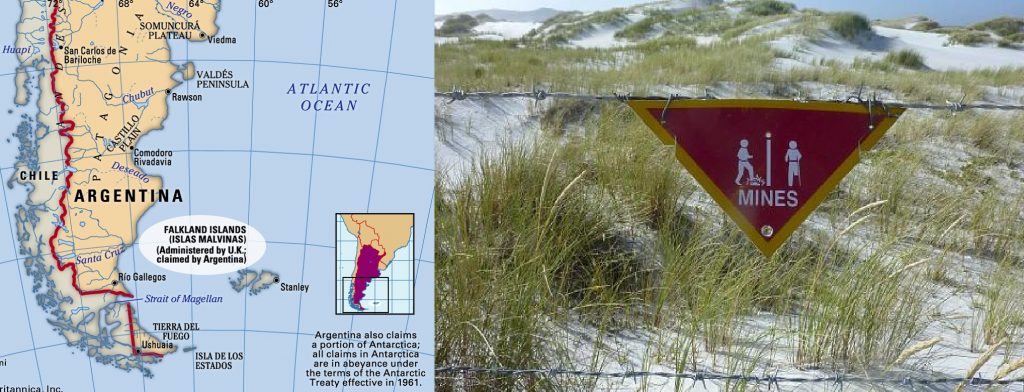
Nearly 40 years after the Falklands Wars, all but one of the remaining anti-personnel landmines on the islands have been cleared. On Tuesday 10th November, the UK’s foreign office announced that the final landmine will be set off clearing the islands of landmines placed during the 1982 war. The islanders had called for a celebration there on 14 November.
Argentina invaded the British territory of Falkland Islands in 1982 which was taken back by British forces 74 days later. The island territory is located 400 km off the Argentinian coast. It is estimated that nearly 13,000 mines were placed by the Argentine forces during this battle.
The programme to remove the mines was started in 2009 as part of the UK’s obligations under the international anti-personnel mine ban convention. The mine clearance was carried out by a team from SafeLane Global, under British supervision, enabling the UK to meet its obligations under the Anti-Personnel Mine Ban Convention. The UK’s Foreign Office tweeted that the Falkland Islands are free of lethal landmines due to the efforts of a UK funded team. The UK is contributing £36m to continue demining around the world, tweeted the Foreign Office.
Wendy Morton, UK Minister with responsibility for the Falklands, said in a statement: “This is a huge achievement for the Islands and we must pay tribute to the brilliant team of de-miners who put their lives at risk day to day removing and destroying landmines to make the Falklands safe. “Our commitment to ridding the world of fatal landmines does not end with our territories being mine free. A further £36 million of UK funding will allow de-mining projects across the world to continue, protecting innocent civilian lives”, he said.
For the islanders, freeing the territory of land mines is a fresh breath of life as they will be able to move around easily and also use the beeches that were cordoned off for decades. The celebration on 14th November at Falklands Islands was also a reminder of the task ahead of clearing landmines in other parts of the world.
Two decades after countries signed the Mine Ban Treaty – a global agreement to ban the use, stockpiling, production and transfer of antipersonnel mines, many countries continue to make and keep these weapons. Several of the 164 signatories are said to still have stockpiles. The latest Landmine Monitor report reveals there are about 50 million antipersonnel mines stockpiled around the world.
Countries that have signed the Mine Ban Treaty have also agreed to remove mines buried on their territory. In 2017, about 128 square kilometres of land was reported to have been cleared, with 168,000 landmines destroyed. But 58 countries remain contaminated with landmines. A total area of more than 100 square kilometres per country is believed to be contaminated with landmines in nations including Afghanistan, Bosnia and Herzegovina, Cambodia, Turkey and Yemen.
As deaths due to landmines continue to increase every year, Landmine Monitor recorded 7,239 casualties where 2,793 people were confirmed as killed and 4,431 were injured in 2017 alone. These deaths were reported to be due to antipersonnel, anti-vehicle and improvised devices. 87% of the recorded landmine casualties were civilians.
